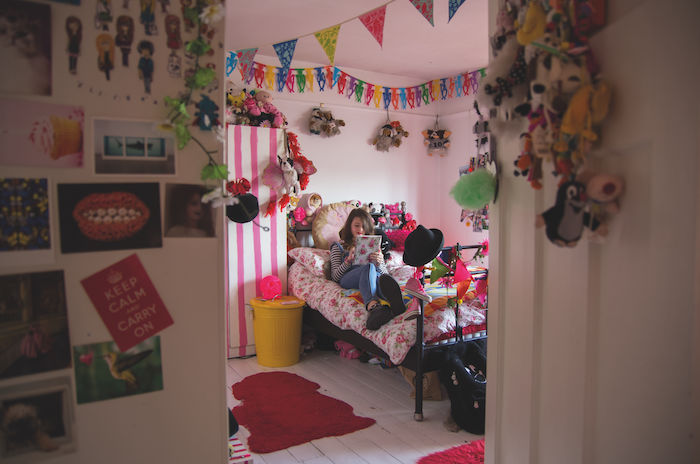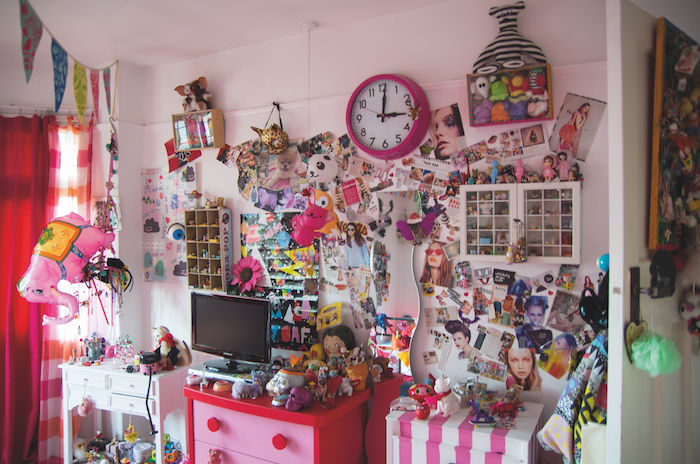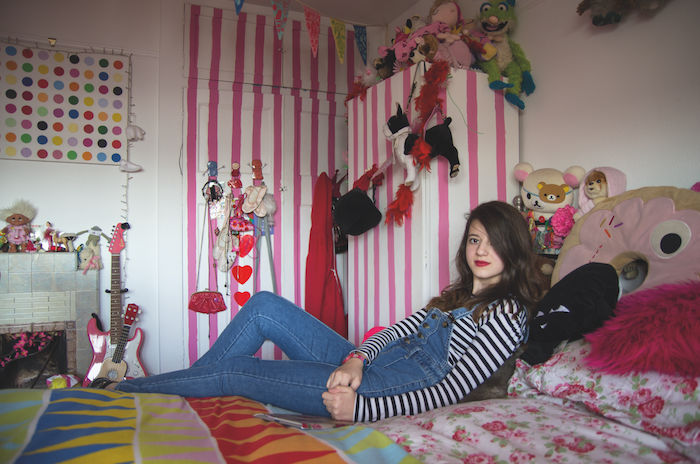
Photos: Olivia Howitt
What does your bedroom say about you? Olivia Howitt’s photographic project explores this most intimate of spaces
Like many good ideas, Olivia Howitt’s What’s in Your Bedroom? project came out of a conversation with her friend. “He told me about a girl he met at a friend’s shared house in Hackney – they were talking about bikes and she invited him to see her bedroom. She had bicycles filling every available space, on the floor and hanging from the ceiling.” Olivia was struck not only by the girl’s passion but that she only had one room to house it. “I started to think about what goes on in people’s bedrooms, other than the obvious...”
Her project is a visual demonstration of just how many things are going on in people’s bedrooms, from side projects to main jobs, and how even the smallest of spaces can be used in a creative way. As Olivia describes them, they are “small museums exhibiting moments of their inhabitant’s life in objects”, each capable of telling “short stories about our lives”.

While our bedrooms became our realms as teenagers (as in the marvellous example of Ellie May O’Sullivan, pictured) that experience is prolonged in London, where Olivia has shot the majority of the rooms, where housing costs are likely to mean shared accommodation well into your twenties at the very least. That was Olivia’s experience when she moved to the capital from Manchester, going from her own house to “all of a sudden, my whole world contained within my bedroom.”
Across the array of tastes and styles of bedrooms Olivia has had the privilege to photograph, there’s a common link, and one that’s not linked to their inhabitant’s taste or budget. “For me they have soul. I’d always want my bedroom to have soul”.

See more of Olivia's bedrooms at whatsinyourbedroom.com and @whatsinyourbedroom. You can snoop inside three more bedrooms in issue 40 of Oh Comely, out now.

Ellie May O’Sullivan, student
“My bedroom is an area that is completely my own, so it’s a place where I can relax, listen to music, draw and express myself. My mum and sister have always collected things and I guess I’ve followed the family trend. There are so many things I love in my room and it’s so hard to pick a favourite – in a fire, I’d probably be burnt to a crisp trying to decide what to save – but definitely one is my small vintage Steiff penguin, Peggy, who’s a bit tatty round the edges but is really cute and fuzzy.”













